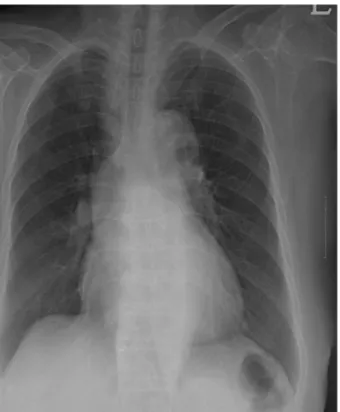593
Print ISSN 1738-5520 / On-line ISSN 1738-5555 Copyright © 2010 The Korean Society of Cardiology CASE REPORT
DOI 10.4070/kcj.2010.40.11.593
Open Access
A Case of Pulmonary Arterial Hypertension Associated
With Hyperthyroidism, Persistent After Euthyroidism Was Obtained
Jin Yeon Hwang, MD, Suk Hyang Bae, MD, Jung Min Lee, MD, Dong Gyun Kim, MD, Ji Hye Ahn, MD, Min Sik Kim, MD, Young Dae Kim, MD, Hee Gyung Baek, MD, Yong Rak Cho, MD and Tae Ho Park, MD Department of Internal Medicine, Dong-A University College of Medicine, Busan, Korea
ABSTRACT
Cardiovascular manifestations in hyperthyroidism occur frequently with various phenotypes. An association between hy- perthyroidism and pulmonary arterial hypertension has been reported. In previously reported cases, the hemodynamic and symptomatic recovery of pulmonary arterial hypertension is usually concomitant with achievement of euthyroidism. We report a patient who had pulmonary arterial hypertension associated with Graves’ disease, which persisted after euthyroidism was obtained. (Korean Circ J 2010;40:593-595)
KEY WORDS: Pulmonary hypertension; Hyperthyroidism; Graves’ disease.
Received: December 16, 2009 Revision Received: February 26, 2010 Accepted: March 23, 2010
Correspondence: Young Dae Kim, MD, Department of Internal Medi- cine, Dong-A University College of Medicine, 3-1 Dongdaesin-dong, Seo- gu, Busan 602-715, Korea
Tel: 82-51-240-2959, Fax: 82-51-242-5852 E-mail: kimyd@mail.donga.ac.kr
cc
